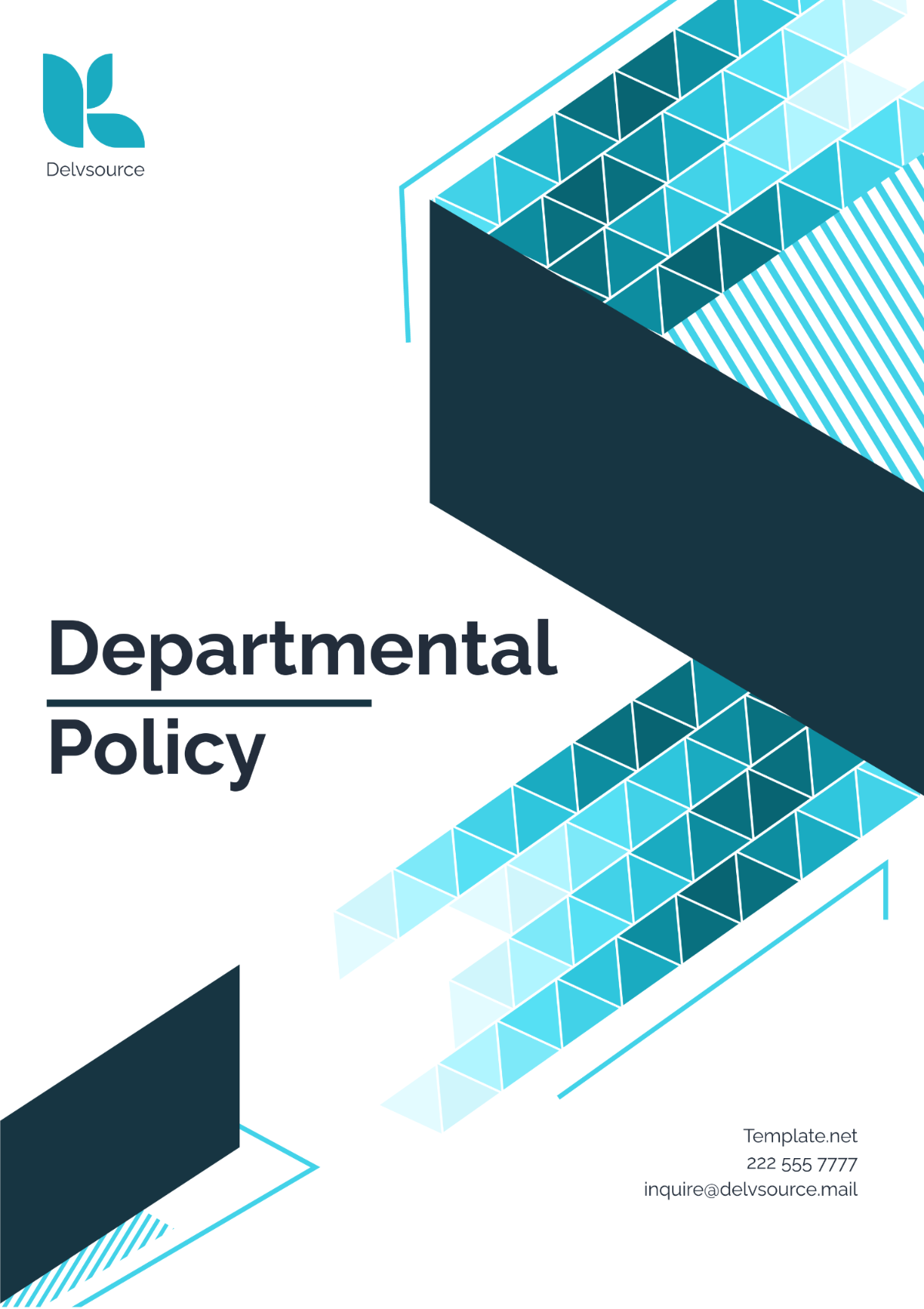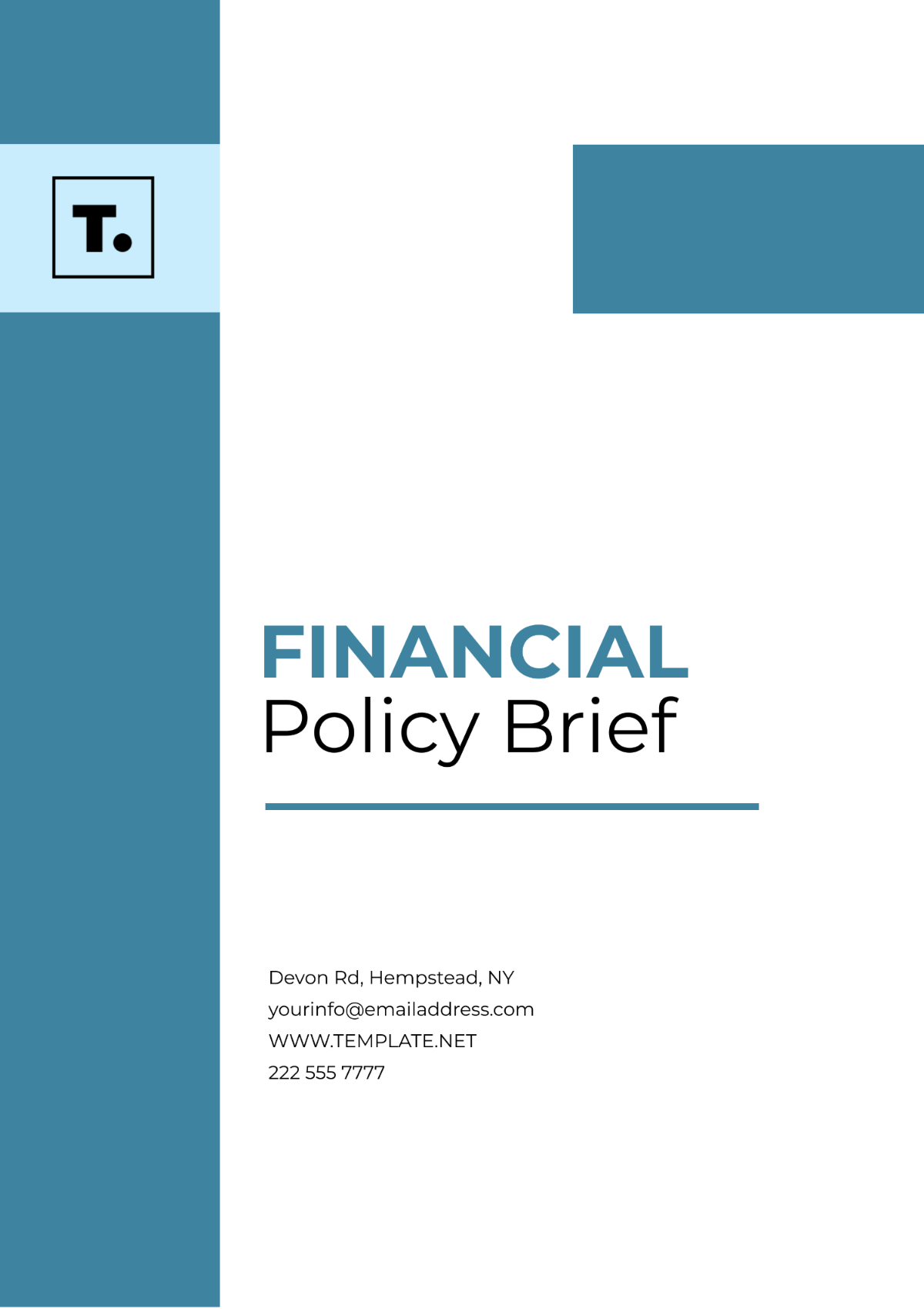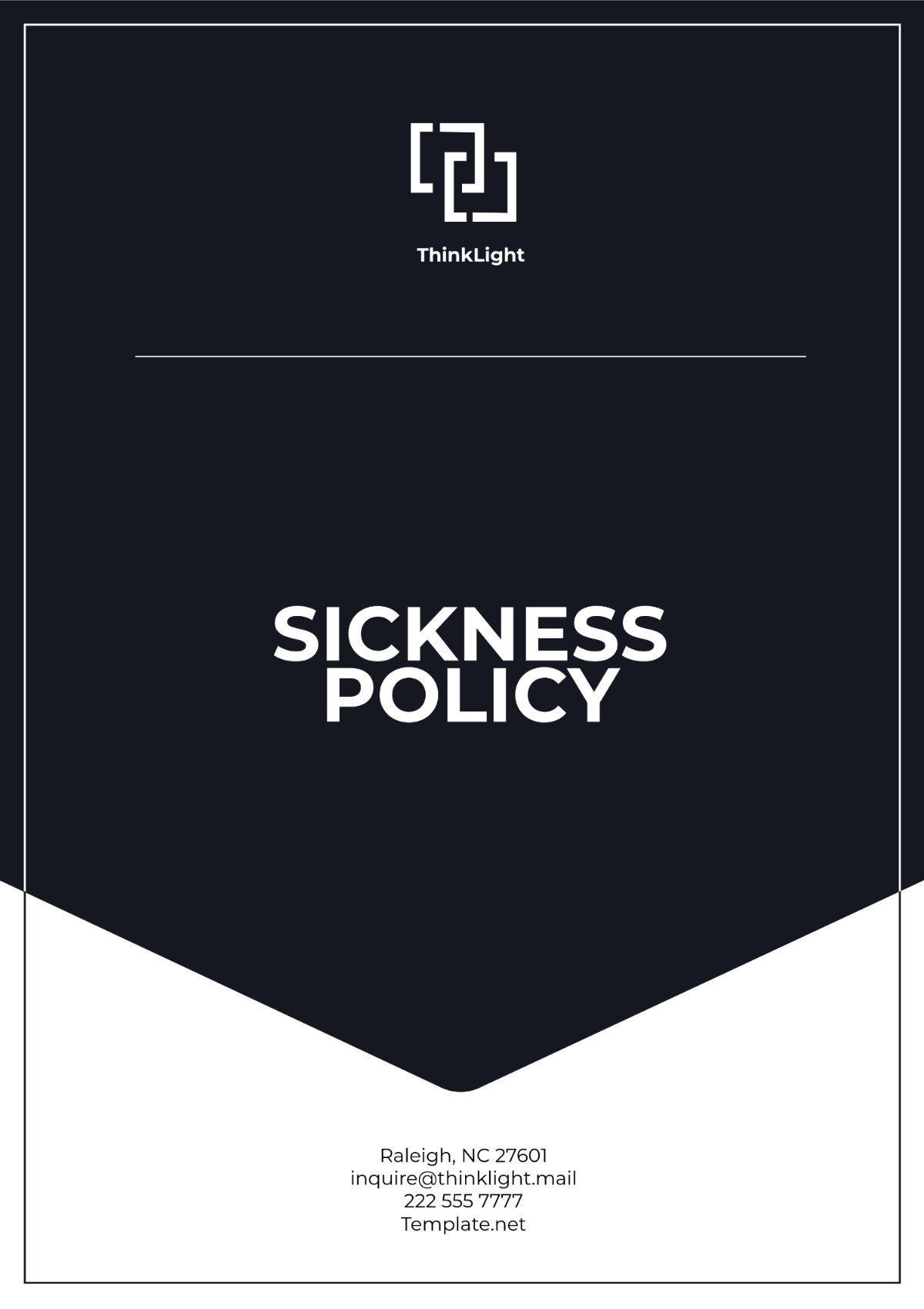Board of Director Conflict of Interest Policy
1. Introduction
1.1 Purpose of the Policy
The purpose of this Conflict of Interest (COI) Policy is to establish guidelines for identifying, disclosing, and managing any potential or actual conflicts of interest among the Board of Directors (the "Board") of [Your Company Name]. The Board has a fiduciary duty to act in the best interests of the company, and this policy ensures that decisions made are not unduly influenced by personal, financial, or other conflicting interests. It is imperative that all Board members maintain the integrity and objectivity of their decision-making to safeguard the company's reputation, financial health, and long-term goals.
Conflicts of interest can undermine the trust that stakeholders place in the company and its leadership. Therefore, it is essential to mitigate any situations that could result in an appearance of impropriety or self-dealing. By implementing this policy, [Your Company Name] aims to ensure that all Board members remain accountable to the company and its shareholders, and that their actions align with the best interests of the organization as a whole.
1.2 Scope of the Policy
This policy applies to all members of the Board of Directors of [Your Company Name], including any subcommittees and special advisory groups formed by the Board. The policy covers all situations where there is or may be a conflict between the personal interests of a Board member and the duties they owe to the company. Such conflicts can arise through relationships, financial interests, business dealings, or other personal connections. This policy is also applicable in cases where there is an appearance of a conflict, even if there is no direct financial gain or loss associated with the matter at hand.
In cases where the Board member's spouse, family member, or business associate stands to benefit from a company decision, this policy applies. The goal is to ensure transparency and accountability in all decision-making processes, thereby preventing any undue influence that could negatively impact the interests of the company and its shareholders.
2. Definition of Conflict of Interest
2.1 General Definition
A conflict of interest arises when a Board member has a personal, professional, or financial interest that could impair or be perceived to impair their ability to act in the best interests of [Your Company Name]. These conflicts can stem from a variety of sources, including but not limited to personal relationships, financial investments, or outside business activities. The key element in identifying a conflict of interest is whether the situation could influence a Board member’s objectivity or judgment when making decisions for the company.
While not all conflicts are inherently harmful, even the appearance of a conflict can undermine the trust and credibility that stakeholders place in the organization. As such, all potential conflicts of interest must be fully disclosed and properly managed in accordance with this policy.
2.2 Types of Conflicts of Interest
The following categories outline some of the most common types of conflicts of interest that may arise for Board members of [Your Company Name]:
Financial Conflicts: These occur when a Board member, or their family member, stands to gain financially from a decision being made by the Board. For example, if a Board member has an ownership stake in a supplier or customer of [Your Company Name], and the company is making a decision to enter into a new contract with that supplier or customer, a conflict of interest may exist. This includes direct financial investments, stock holdings, or ownership interests in companies that have business dealings with [Your Company Name].
If a Board member owns more than [25]% of a competing firm or has a stake in a vendor valued at over [$500,000], this may require disclosure.
Personal Conflicts: When a Board member’s personal relationships, such as family or close friends, could influence their decision-making, this constitutes a personal conflict. For example, if a Board member's spouse is a senior executive at a competing company, the Board member might be in a position to make decisions that could favor the spouse’s interests.
Business Conflicts: A Board member’s involvement in outside business ventures, particularly those that directly compete with [Your Company Name], may create a conflict. If a Board member is engaged in a startup company that is in direct competition with [Your Company Name], their decisions may be driven by loyalty to their own business rather than to the company they are serving.
If a Board member serves as a key shareholder or executive in a competing firm worth over [$1,000,000], this should be disclosed immediately.
Family Conflicts: When a Board member's immediate family members (such as parents, children, or siblings) are involved in a decision-making process, or if they stand to benefit personally from a company decision, this could create a conflict. For instance, if a Board member's child is applying for a position at [Your Company Name], and the Board is involved in the hiring process, this would be a conflict of interest.
If a Board member’s immediate family member is a senior candidate for a high-paying position within the company, the Board member must disclose this conflict.
2.3 Situations Creating a Conflict of Interest
While conflicts of interest vary by individual and circumstance, some common situations where conflicts may arise include:
Gifts and Entertainment: Accepting gifts, services, or travel from a vendor, customer, or business partner that could influence decision-making.
Family or Personal Relationships: A Board member voting on a contract or hire involving their spouse, children, or close relatives.
Outside Business Activities: A Board member participating in external business activities that are in direct competition with [Your Company Name], or that may present opportunities for personal gain.
Investment Interests: A Board member investing in a competitor or vendor that stands to benefit from Board decisions.
3. Disclosure of Conflicts of Interest
3.1 Requirement for Disclosure
All Board members are required to disclose any potential, actual, or perceived conflicts of interest as soon as they arise. Full disclosure is necessary to allow the Board and the company’s leadership to assess the impact of the conflict and determine the appropriate course of action. Transparency in this process is critical for maintaining trust among stakeholders, as well as complying with legal and ethical obligations.
3.2 Timing of Disclosure
Conflicts of interest should be disclosed at the following key points:
Annually: Board members must complete and submit a Conflict of Interest Disclosure Form on an annual basis, typically due by [Date]. This form requires detailed information on any financial, business, or personal interests that could create a conflict.
Before each meeting: Before each Board meeting, members must review their ongoing interests and disclose any conflict that could arise from upcoming decisions on the agenda.
Whenever a new conflict arises: If a Board member becomes aware of a new conflict after submitting the annual disclosure form, they must disclose it immediately to the Chair of the Board.
3.3 Methods of Disclosure
Disclosures may be made through the following means:
Written disclosure: A formal written statement submitted to the Chair of the Board and Corporate Secretary, detailing the nature of the conflict and the potential impact.
Oral disclosure: In situations requiring immediate attention, a Board member can make an oral disclosure during a Board meeting, followed by written confirmation. If a Board member’s spouse is being considered for a senior executive position, they should verbally disclose this during the meeting and follow up with written documentation of the disclosure.
4. Identification and Prevention of Conflicts of Interest
4.1 Identifying Potential Conflicts
Board members must regularly assess their personal and professional situations to identify any potential conflicts that may arise. To help in this process, [Your Company Name] may provide Board members with periodic reminders and resources to facilitate their self-assessment. In addition to self-assessment, the Board should also review the following areas to identify potential conflicts:
Review of company business relationships: A quarterly or semi-annual review of major business relationships (such as suppliers, customers, and competitors) will help identify any conflicts that may arise.
Changes in personal circumstances: Board members must remain vigilant and disclose any changes in their personal circumstances, such as the acquisition of a financial interest in a competitor or the hiring of a family member at [Your Company Name].
4.2 Preventing Conflicts
In order to prevent conflicts from affecting Board decisions, the following proactive steps will be taken:
Recusal from voting: A Board member with a conflict of interest will recuse themselves from voting on any related matters. For example, if a Board member stands to benefit financially from a decision, they will step away from voting on that decision.
Independent review: If there is a question about whether a conflict of interest exists, an independent review may be conducted by an ethics committee or an external advisor.
For any financial interests over [$500,000], the Board may engage an independent consultant to provide an assessment of the potential conflict.
Board rotation: In cases where conflicts become repetitive or systemic, the company may rotate Board members in and out of certain committees or areas of decision-making.
4.3 Ongoing Monitoring
[Your Company Name] will implement a system of continuous monitoring to identify conflicts of interest proactively. This may involve regular reporting from the Board members, as well as a review by the ethics committee. In addition, any new contracts, acquisitions, or other significant business decisions should be reviewed for potential conflicts before they are finalized.
5. Procedures for Managing Conflicts of Interest
5.1 Immediate Disclosure and Recusal
When a conflict of interest is identified, the Board member must immediately disclose the conflict, either in writing or orally. Once disclosed, the Board member must recuse themselves from any discussion or voting related to that matter. The Chair of the Board is responsible for ensuring that the process is followed properly and that the Board’s integrity is maintained.
5.2 Decision-Making Without a Conflict of Interest
If the conflict does not require a Board member to be fully excluded from discussions, the Board may allow the individual to participate in discussions but not in the final decision-making process. This ensures that the Board member’s input is considered, while maintaining the objectivity of the final decision.
5.3 Resolution of Conflicts
In the event that a conflict is discovered after a decision has been made, the Board will investigate whether the conflict affected the decision. If it is determined that a conflict influenced the outcome, corrective actions will be taken. These may include reversing the decision, implementing safeguards to prevent similar conflicts, or removing the involved Board member from the Board entirely.
6. Consequences of Violating the Conflict of Interest Policy
6.1 Disciplinary Actions
Violations of this policy can lead to serious consequences, including removal from the Board. If a conflict of interest is found to have resulted in a breach of fiduciary duty, the Board member may face suspension or permanent removal from the Board. Additional penalties may apply if the violation is found to be illegal, including legal action, fines, or other penalties.
A Board member found to have engaged in a conflict of interest involving more than [$1,000,000] of financial benefit may be removed from the Board.
6.2 Reporting Violations
Any person who identifies a conflict of interest that has not been disclosed or who witnesses violations of this policy can report them through a variety of channels, including an ethics hotline or directly to the Board Chair. All reports will be investigated thoroughly, and appropriate action will be taken to address the situation.
7. Annual Review and Updates to the Policy
7.1 Regular Review
This policy will be reviewed at least once a year to ensure its effectiveness. The Board may consider amendments based on changes in regulations, best practices, or the company’s structure. The review process will ensure that the policy remains up to date with any developments in corporate governance, industry standards, or legal requirements.
7.2 Updates and Modifications
Changes to the policy will be communicated to all Board members, who will be required to acknowledge their understanding and adherence to the updated policy. Regular updates ensure that all Board members are aware of the current expectations regarding conflicts of interest and that the company continues to operate with the highest standards of ethical conduct.
8. Training and Education on Conflict of Interest
8.1 Ongoing Training Requirements
To ensure that all Board members are well-equipped to identify and manage potential conflicts of interest, [Your Company Name] will implement a mandatory training program for all new and current Board members. This training will be designed to:
Educate Board members on what constitutes a conflict of interest.
Provide examples of potential situations where conflicts may arise.
Outline the procedures for disclosure, management, and resolution of conflicts.
Ensure that Board members understand the importance of maintaining objectivity and independence in their decision-making.
Board members will be required to complete this training upon joining the Board and to participate in refresher courses every two years or as needed. The training sessions may be conducted by internal legal and ethics experts, or by external consultants specializing in corporate governance and ethics.
A Board member with no previous experience on a Board may be invited to attend an ethics seminar within three months of their appointment. This seminar will include case studies and hypothetical scenarios to better prepare them for potential conflict situations.
8.2 Tracking and Documentation of Training
[Your Company Name] will maintain records of training completion for all Board members. These records will be kept in a secure location and reviewed during annual performance reviews of the Board. Documentation will include the date of completion, topics covered, and any certifications of completion provided by the training program.
The corporate secretary will keep a log of each Board member's training progress, ensuring that all members complete the necessary training within the required time frame. A Board member who fails to complete the training will be reminded, and repeated non-completion may result in suspension or removal from the Board.
8.3 Periodic Refresher Sessions
In addition to initial training, [Your Company Name] will offer periodic refresher sessions on conflict of interest and ethical governance. These sessions will serve as a reminder of the Board’s responsibilities and update members on any changes to laws or company policies. Refresher sessions will be held annually or whenever significant changes occur in corporate governance or the regulatory environment that may impact conflict of interest management.
A refresher session might be scheduled for March of each year, ensuring that all members receive the most up-to-date information and review any changes in the company’s practices or legal requirements.
9. Reporting Violations of the Conflict of Interest Policy
9.1 Mechanisms for Reporting
To maintain an environment of transparency and accountability, [Your Company Name] provides multiple channels through which any stakeholder, including employees, shareholders, or other members of the Board, can report concerns related to potential conflicts of interest. These reporting mechanisms include:
Direct reporting to the Chair of the Board: Any member of the Board may report suspected violations directly to the Chair of the Board, who is responsible for investigating the matter and ensuring compliance with the policy.
Ethics Hotline: [Your Company Name] provides an anonymous ethics hotline, available 24/7, where individuals can report concerns without fear of retaliation. This ensures that whistleblowers can bring attention to any conflicts of interest that they have observed or believe to exist.
External Audit: An external auditor may be engaged periodically to review potential conflicts of interest that may not be easily identified internally. The auditor will provide an independent, unbiased report to the Board, recommending actions to resolve any identified issues.
An employee who witnesses a Board member accepting gifts from a supplier may anonymously report the incident through the hotline, triggering an internal investigation by the corporate governance committee.
9.2 Protection Against Retaliation
[Your Company Name] has a strict non-retaliation policy to protect those who report potential violations of the conflict of interest policy. Any individual who reports a concern in good faith will not face adverse consequences or retribution. This is to ensure that individuals feel comfortable raising concerns without fear of retaliation.
If a whistleblower reports that a Board member has been using their position for personal financial gain, they will be assured that their job, position, or relationship with the company will not be jeopardized in any way. Any acts of retaliation will be treated as a serious violation of company policy and will be addressed swiftly.
9.3 Investigation and Resolution of Reports
Once a potential violation has been reported, the company will conduct a thorough investigation to determine the validity of the claim. The investigation will be conducted by the Chair of the Board, the Audit Committee, or an independent third party, depending on the nature and severity of the report. Key aspects of the investigation include:
Interviews and Fact-Finding: The investigator will conduct interviews with the Board member involved, as well as any witnesses who may have relevant information.
Document Review: All relevant documents, such as meeting minutes, contracts, and financial statements, will be reviewed to assess the impact of the alleged conflict of interest.
Outcome Determination: After a thorough investigation, the findings will be reported to the Board, which will determine the appropriate course of action based on the severity of the conflict.
If an investigation reveals that a Board member failed to disclose a conflict of interest involving a business partner, corrective actions such as a formal reprimand or removal from the Board may be recommended.
10. Oversight and Governance of the Conflict of Interest Policy
10.1 Responsibility of the Board Chair
The primary responsibility for overseeing the implementation and enforcement of this Conflict of Interest Policy lies with the Chair of the Board. The Chair ensures that all Board members are educated about the policy and that conflicts are disclosed and managed appropriately. In addition, the Chair is responsible for reviewing disclosures and determining the appropriate action to mitigate any conflicts.
10.2 Role of the Audit Committee
The Audit Committee plays a crucial role in monitoring the effectiveness of the conflict of interest policy. The Committee will review all conflict disclosures and work with the Board to ensure that any potential or actual conflicts are managed properly. Additionally, the Audit Committee will assist in the annual review of the policy and ensure that it remains aligned with best practices in corporate governance.
If a Board member has a financial interest in a company that is about to enter a major contract with [Your Company Name], the Audit Committee will review the disclosure and may recommend a third-party assessment of the contract to ensure that the decision is free from undue influence.
10.3 Annual Review of Policy Effectiveness
To ensure that the conflict of interest policy is working as intended, the Board, led by the Audit Committee, will conduct an annual review of the policy’s effectiveness. The review will include an assessment of any disclosed conflicts, how they were handled, and whether the policy’s procedures have been followed. This review will also consider any changes in regulations or industry standards that might require policy adjustments.
Each year, the Board may schedule a session to review whether the policy has been effective in preventing conflicts of interest, based on feedback from Board members, management, and external auditors. If necessary, modifications will be made to enhance transparency and mitigate future risks.
11. Closing Remarks
11.1 Commitment to Ethical Leadership
At [Your Company Name], we are committed to fostering an ethical and transparent corporate culture. The Conflict of Interest Policy is a critical part of ensuring that our Board of Directors consistently acts in the best interests of the company, its shareholders, and other stakeholders. By disclosing potential conflicts and adhering to sound conflict management practices, we maintain the trust of our investors, employees, and the wider community.
This policy reinforces our dedication to high standards of corporate governance, promoting a company culture where personal interests never undermine the collective goals and objectives of [Your Company Name]. We believe that upholding this policy is essential for preserving our integrity and reputation in the marketplace.
11.2 Future Considerations
As the company evolves, the Board remains committed to regularly revisiting the Conflict of Interest Policy and making any necessary updates to ensure that it continues to reflect best practices. We understand that the business environment is dynamic and that new situations may arise that require adjustments to this policy. By ensuring that the policy is both current and effective, [Your Company Name] will continue to operate with the highest ethical standards well into the future.

















































